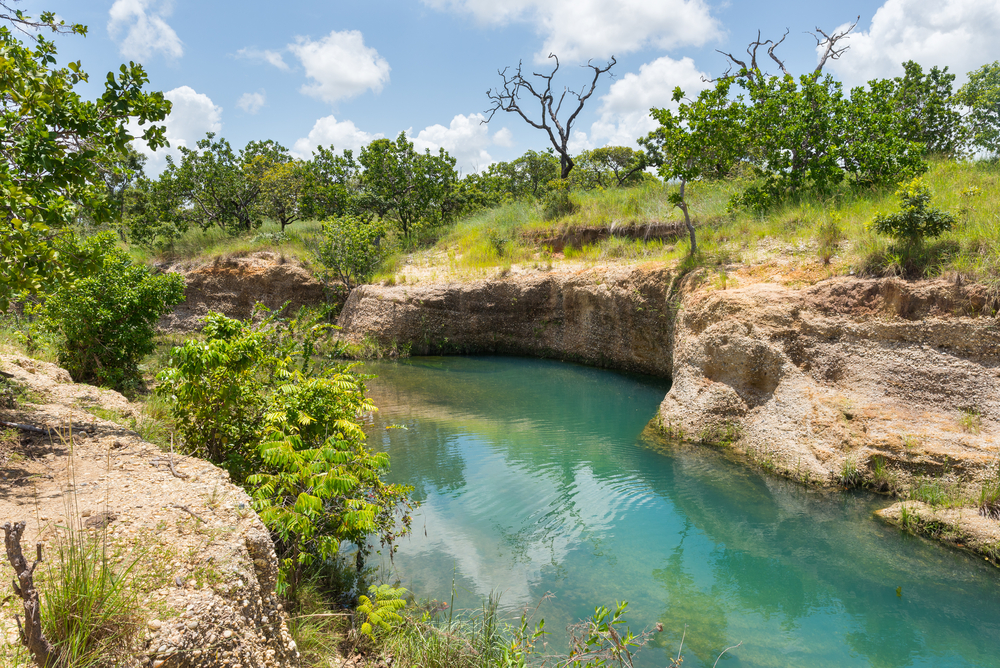El Ávila Overview
El Ávila National Park, known locally as Parque Nacional Waraira Repano, is a striking natural reserve in northern Venezuela, covering approximately 330 square miles (850 square kilometers).
Situated along the Cordillera de la Costa, it serves as a dramatic backdrop to Caracas, the capital city. The park extends from the Caribbean coastline inland, encompassing an impressive range of elevations that give rise to its diverse ecosystems. At its highest point, Pico Naiguatá rises to 9,072 feet (2,765 meters), offering breathtaking views of both the city and the sea.
The terrain is characterized by steep mountains, deep valleys, and lush cloud forests, with dense vegetation covering much of the park. Seasonal rivers such as the Catuche, Guaire, and Chacaíto traverse the landscape, carving through the rugged terrain and sustaining rich biodiversity.
The park’s flora varies by altitude, with dry forests at lower elevations transitioning into humid cloud forests as one ascends. The lower slopes are covered with shrubs, cacti, and evergreen species, while higher up, tall trees such as mahogany and cedars thrive in the moist environment. Epiphytes, orchids, and bromeliads are abundant, clinging to tree trunks and branches, adding vibrant colors to the green canopy.
This ecological variety supports a wide array of wildlife, including several endemic and threatened species. Mammals such as the spectacled bear, puma, and ocelot inhabit the more remote areas, while white-tailed deer and capybaras are more commonly spotted. The park is also home to a variety of monkeys, including the red howler monkey, whose distinctive calls echo through the forest.
Birdwatchers flock to El Ávila to observe species like the Venezuelan trogon, military macaw, and the black-faced tanager, among the nearly 200 bird species recorded within the park. Reptiles such as the green anaconda and various species of colorful frogs also add to the park’s ecological richness.
One of the park’s most popular attractions is the Waraira Repano Cable Car, which provides a scenic ascent from Caracas to the mountaintop. From the summit, visitors can enjoy panoramic views stretching from the city skyline to the Caribbean Sea. Another highlight is the town of Galipán, a picturesque mountain village known for its flower markets, traditional Venezuelan food, and charming inns.
Hikers and outdoor enthusiasts can explore a vast network of trails, with routes leading to destinations like Pico Naiguatá and El Humboldt Hotel, a historic landmark perched high on the mountainside. Along these trails, visitors may encounter cascading waterfalls, including Quebrada Quintero, where crystal-clear waters flow through dense forest settings. The park is also a favorite destination for mountain bikers, runners, and birdwatchers who appreciate its diverse landscapes and accessible trails.
Conservation efforts in El Ávila National Park have focused on mitigating human impact, as urban expansion from Caracas poses a significant challenge. Deforestation, illegal settlements, and wildfires have threatened the park’s delicate ecosystems.
However, conservation initiatives, including reforestation projects and stricter enforcement of protected areas, have helped preserve its natural beauty. Local environmental organizations and park rangers work to maintain ecological balance while promoting responsible tourism.
Despite these challenges, the park remains an essential green lung for Caracas, offering a refuge for wildlife and a cherished escape for city dwellers seeking nature and tranquility. The success of conservation programs has ensured that El Ávila continues to provide both ecological benefits and recreational opportunities for visitors.













































































